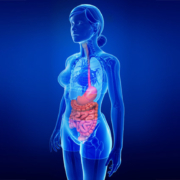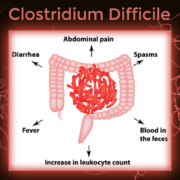Probiotics Can Cut C. Diff Rates
The authors reported that there were 39 studies included in the Cochrane review; 33 on adults and six on children. They included studies that were in-patient, out-patient, and using varying strains and quantities of probiotics. Here’s what they found.
There was moderate evidence that the use of probiotics together with the administration of antibiotics did reduce the occurrence of C. diff. The risk of getting the C. diff infection was reduced by 60% when compared to control subjects or those who were not treated; typically about 4% of the subjects got C. diff when treated by antibiotics, and it was reduced to 1.5% when probiotics were given concurrently. The phrase “moderate evidence” is one I haven’t used before. It’s generally specific to Cochrane Reviews and is assessed using various factors, ending with a number that reflects the quality of studies included in the analysis.
There was also a reduction in abdominal cramping and diarrhea in those subjects who were given probiotics with their antibiotics compared to those who didn’t get probiotics. In this case, the quality of the research was considered of poor quality. Does that mean that the probiotics were ineffective? No. More than likely it was due to the subjective assessments of pain by individuals. You can test stool to see if C. diff is present, as would have been done in the other part of the research, but relying on people’s self-assessment of pain is less objective. (That’s why my website offers the pain scale developed by the Missoula Project; it has physical activity descriptors that make it easier to determine where you are on the scale. Look for it on the Health Info page.)
Where does that leave us? I’ll finish on Saturday with some recommendations for the use of probiotics.
What are you prepared to do today?
Dr. Chet
References:
1. JAMA. doi:10.1001/jama.2018.9064.
2. Cochrane Database Syst Rev. 2017 Dec 19;12:CD006095.









